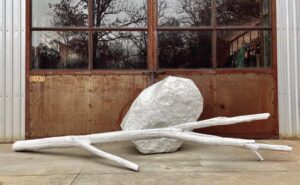
Carbonating a cocktail adds a bit of sizzle
By Tony Cross
We’re living in an amazing time, with a plethora of questions, answers, ideas and collaborations at our fingertips. I’ve never been great at anything but, thanks to the internet, I’ve learned enough to know what I’m doing. Everything from raising the temperature on my hot water heater, to recipes — the internet, especially YouTube, has been a great friend indeed. I would, and still do, fall asleep every night to YouTube while watching tutorials, music reviews and workout tips on my iPhone. A few years ago, I came across a YouTube channel called Small Screen Network. This channel has a modest number of cocktail videos, and it introduced me to the likes of Jaime Boudreau, head barman and owner of Canon cocktail bar in Seattle.
Boudreau’s segment, “Raising the Bar”, helped me understand some bartending basics: types of ice for different cocktails, shaking, stirring, tasting each cocktail before sending it out to make sure I didn’t forget an ingredient, or mess up the balance. He also has other how-to videos that deal with smoking cocktails, barrel aging and carbonating. Carbonating a cocktail. Sounds cool, right? Well, it is. Having a delicious cocktail under carbon dioxide pressure brings hundreds of tiny bubbles cascading across your palate almost like Pop Rocks candy. Probably a poor analogy, but hopefully, the dots are starting to connect.
The morning after watching the carbonating video, I went to Amazon right away. I ordered an iSi culinary whip creamer (you can get one for about $85), and grabbed some CO2 chargers to go with it. A pack of 40 single cartridges will run you around $30 on Amazon. When they came in the mail, man, I was so excited I told everyone at work about it. I explained the process; I boasted why it could transform certain mundane drinks; I broke down how it would boost sales — like I knew what I was talking about. I didn’t. I’m confident that I annoyed everyone in a 50-foot radius. So, what was the first drink I carbonated? Distilled water. I put that baby under pressure, and marveled at how cool the aftermath was.
When I decided to mess around with cocktails, I wanted to start simple. So, a margarita it was. I added all of the ingredients into the iSi, sealed the top, and added a cartridge of CO2. I shook it up to ensure the gas was absorbed by the liquids, and then I poured it over ice. It was not good. What was wrong? I used the same recipe as always, so it took me a sec before my aha moment arrived — I forgot to compensate for the ice melting. You see, shaking and stirring a cocktail make these delicious drinks very cold, but the other, and most important, purpose ice serves is dilution. Realizing this, I remade the carbonated margarita but this time I threw in a half ounce of water with it. Just right.
If you’ve got an iSi or you’re thinking about getting one, I’ll break down how to throw a quick carbonated cocktail together. Before adding your ingredients to the whipper, make sure that the vessel is very cold; ice cold is even better. The same goes for your ingredients if you have the time. The colder your mix, the quicker and better carbonated it will be. Pour your mix into the whipper. If you’re making a drink that doesn’t already call for water (e.g., Gin Rickey), then you need to add about half an ounce of water per cocktail. Screw the top of the iSi onto its base and then add a CO2 charger. You’ll hear the gas enter the chamber, and as soon as the charger is empty, shake the whipper vigorously for seconds. Slowly pulling the handle at the top will let the excess gas out. You want to do this because there was air trapped inside the container before you sealed it. Yes, you are letting out some carbon dioxide, but that’s OK because you now want to add one more charger. When the gas fills the chamber, you’ll shake for another 10 seconds. Let your whipper sit under pressure for at least one minute. Slowly release the excess gas again by pulling the handle. Once all the gas is out, you can unscrew the top of the whipper. Pour your carbonated beverage into your glass slowly, or you’ll have a mess on your hands.
One of lesson I quickly learned when I put this into my bar program was that carbonating this way is not cost-efficient. If you haven’t already done the math, each soda charger costs around a dollar after shipping. Not only that, if you’re only making one drink at a time (you can do at least three per whipper) you’re wasting even more. Realizing this, I stopped carbonating cocktails at my bar, and pretty much only use it for carbonating my ginger beer (when the yeast didn’t do its job) and for cocktail foams. Yes, the whipper was originally intended for creams, foams and such. For these, you’ll need to order nitrogen chargers instead of CO2. I think the whipper is more suited for the home bartender. A pack of soda chargers will go a long way at your pad instead of using it at an establishment.
One of the ideas I had when conceptualizing what I wanted Reverie Cocktails to be was the ablility to carbonate cocktails and deliver them. So that’s what I did. A year ago, I had to relearn how to batch and carbonate drinks on a larger scale. (That’s a totally different article.) A ton of trial and error took place, followed by more error. Do you know what pouring out a messed-up 5-gallon batch of cocktails does to a man? Once I got my specs right, however, I was very pleased. You can try one of my many carbonated cocktails (Moscow Mule, seasonal Gin and TONYC, strawberry margarita) on draught around town at locations like The Rooster’s Wife, O’Donnell’s Pub and Neville’s. You probably didn’t know, but for the past two seasons, the Chappy’s Chiller at Chapman’s is my recreation on bubbles. Boy, I love strawberries.
I’ll leave you with a recipe I made when quickly carbonating at home (with my iSi) while getting ready for a wedding last summer. It contains mezcal and my TONYC syrup. Light, smoky and refreshing; this little gadget does wonders for waking up your taste buds.
Mezcal & TONYC
1 1/2 ounces Del Maguey Vida Mezcal
1/2 ounce TONYC
1/4 ounce simple syrup (2:1)
3 ounces distilled water
Carbonated Margarita
1 3/4 ounces Milagro Silver
1/2 ounce Cointreau
3/4 ounce fresh lime juice
1/2 ounce simple syrup (2:1)
1/2 ounce distilled water
(To carbonate, follow directions in column.) PS
Tony Cross is a bartender who runs cocktail catering company Reverie Cocktails in Southern Pines. He can also recommend a vitamin supplement for the morning after at Nature’s Own.





